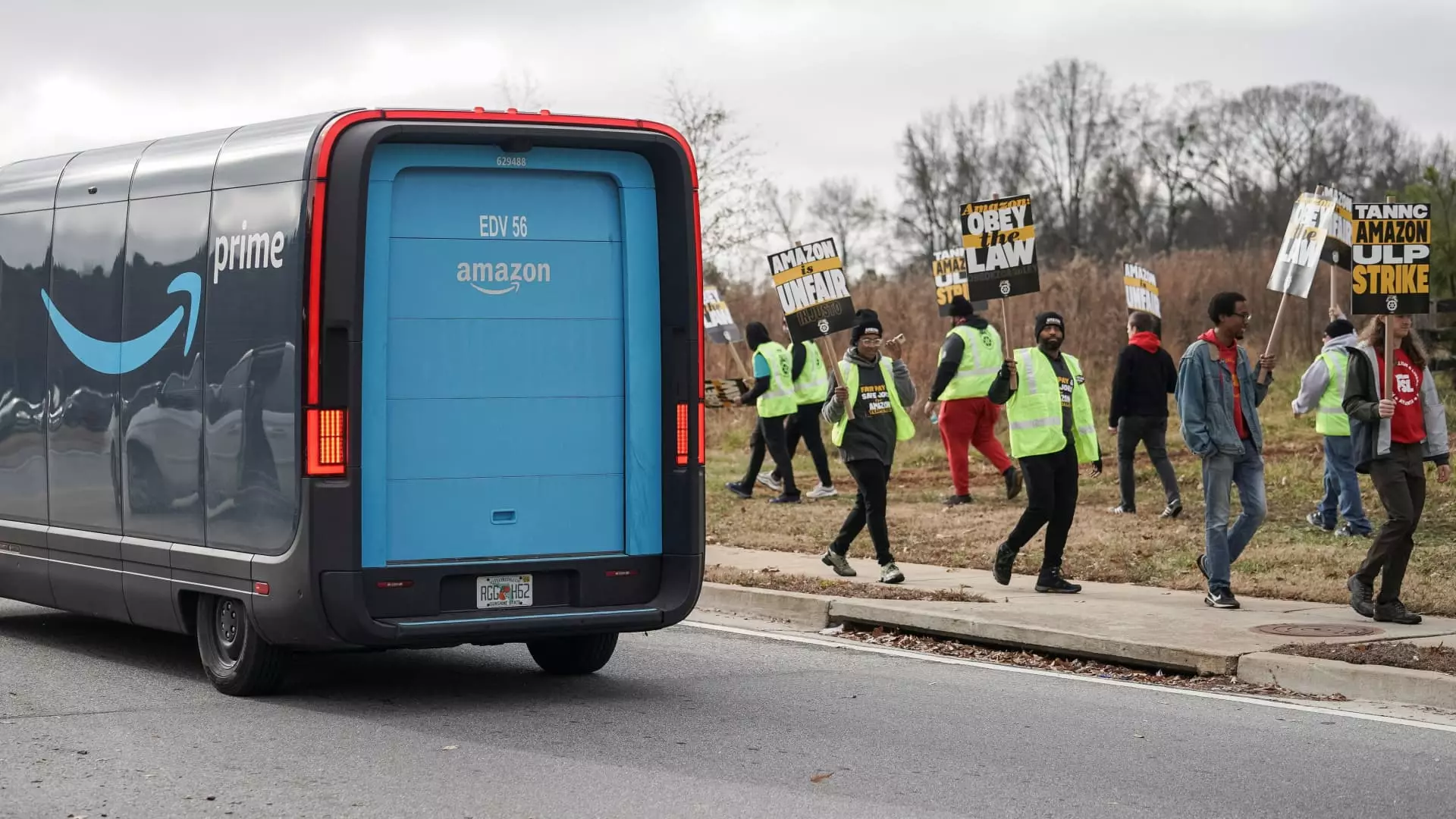On a fateful Thursday, workers from seven Amazon facilities across New York, Georgia, California, and Illinois united to go on strike, driven by a common desire for improved benefits, higher wages, and safer working conditions. This significant movement, orchestrated by the Teamsters union, reflects a growing discontent among employees regarding their working environment at the tech giant. With the peak holiday shopping season approaching, the timing of the strike serves as a pivotal moment for both the workforce and the company, aiming to force Amazon into negotiations and acknowledge the legitimate requests of its employees.
Teamsters President Sean O’Brien articulated the urgency of the situation, asserting that Amazon’s “insatiable greed” could lead to delayed holiday packages for customers. His comments highlight the tension between profit-driven motives of corporate entities and the fundamental rights of workers seeking fair treatment. The union had set a clear deadline for Amazon to engage in negotiations about a new contract, which was apparently disregarded, provoking this unprecedented action termed as the largest strike against Amazon in U.S. history.
In stark contrast to the union’s narrative, Amazon issued a rebuttal, claiming that the Teamsters’ campaign was misleading and comprised largely of external participants rather than its own employees. This disagreement encapsulates the clash between corporate communication strategies and the mobilization of labor unions, revealing the complexities involved in labor relations today.
Historically, Amazon has maintained a firm stance against unionization, opting to counter any organizing efforts amongst its workforce. However, a significant shift began in 2022 when warehouse employees on Staten Island broke the mold by voting to join a union. This formation, known as the Amazon Labor Union, marked the beginning of what appears to be a broader tide towards collective action within the company. The recent affiliation with the Teamsters indicates a consolidation of efforts to secure better labor conditions, showcasing the power struggle inherent in labor movements today.
This strike not only emphasizes the demands for better working conditions and higher wages but also marks a significant chapter in the ongoing fight for labor rights in a rapidly evolving economic landscape. The union claims to represent nearly 10,000 Amazon workers; while this figure might constitute a small fraction of Amazon’s 1.53 million employees, it nonetheless reflects a burgeoning sentiment among the workforce that could influence future labor negotiations and corporate policies.
As the strike unfolds, it raises crucial questions about the future of labor relations within Amazon and the larger tech sector. Will the company continue to resist unionization efforts, or will this strike mark a turning point leading to successful negotiations that prioritize employee welfare? The outcome of this labor movement will undoubtedly resonate beyond Amazon, potentially serving as a catalyst for workers in similar industries seeking to assert their rights and demand fair treatment.
The ongoing strike represents not merely a protest but an assertion of workers’ rights in the face of corporate indifference. With public attention now focused on the actions of both Amazon and the Teamsters, it remains to be seen how this monumental effort will reshape the narrative around labor relations in the modern economy.

